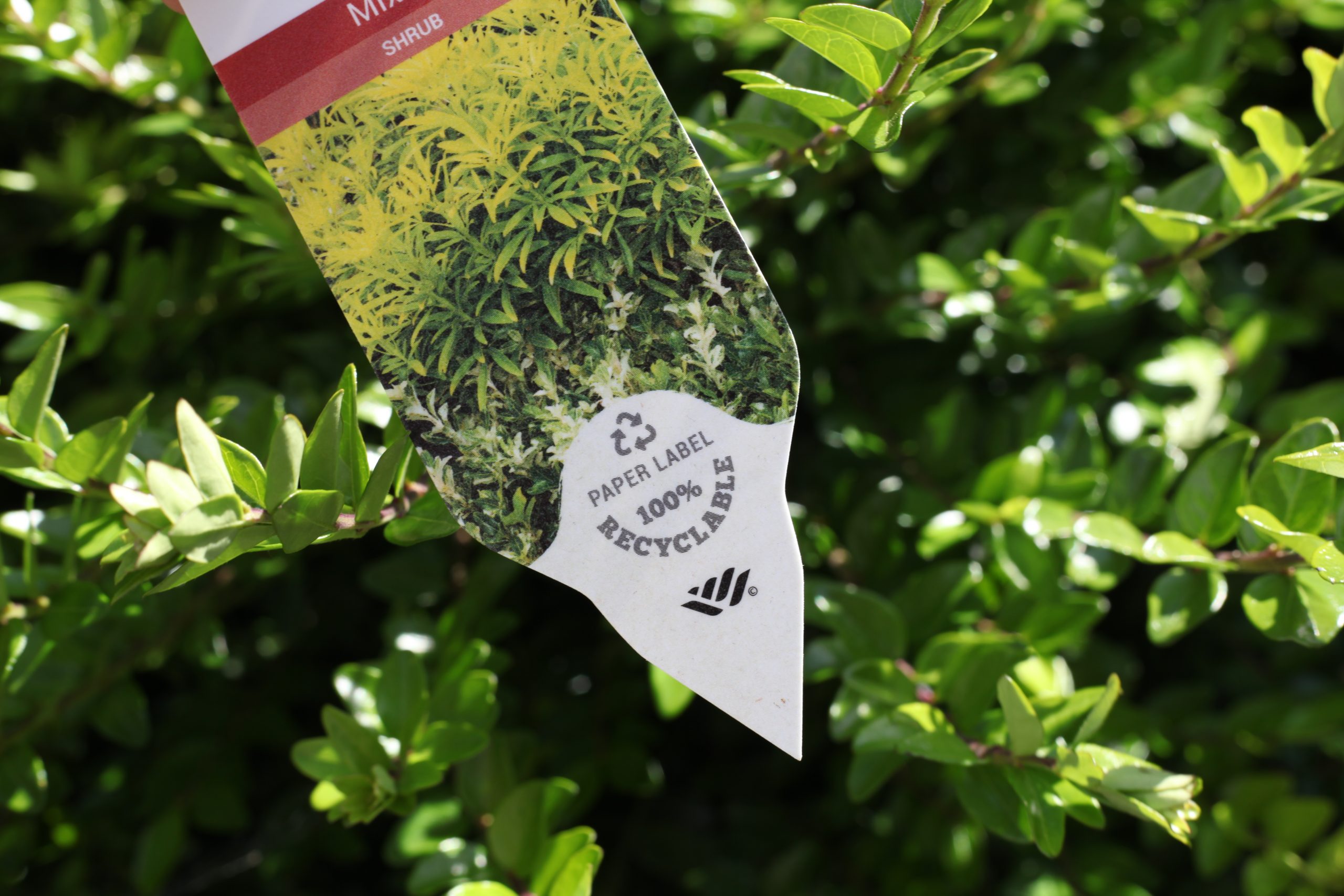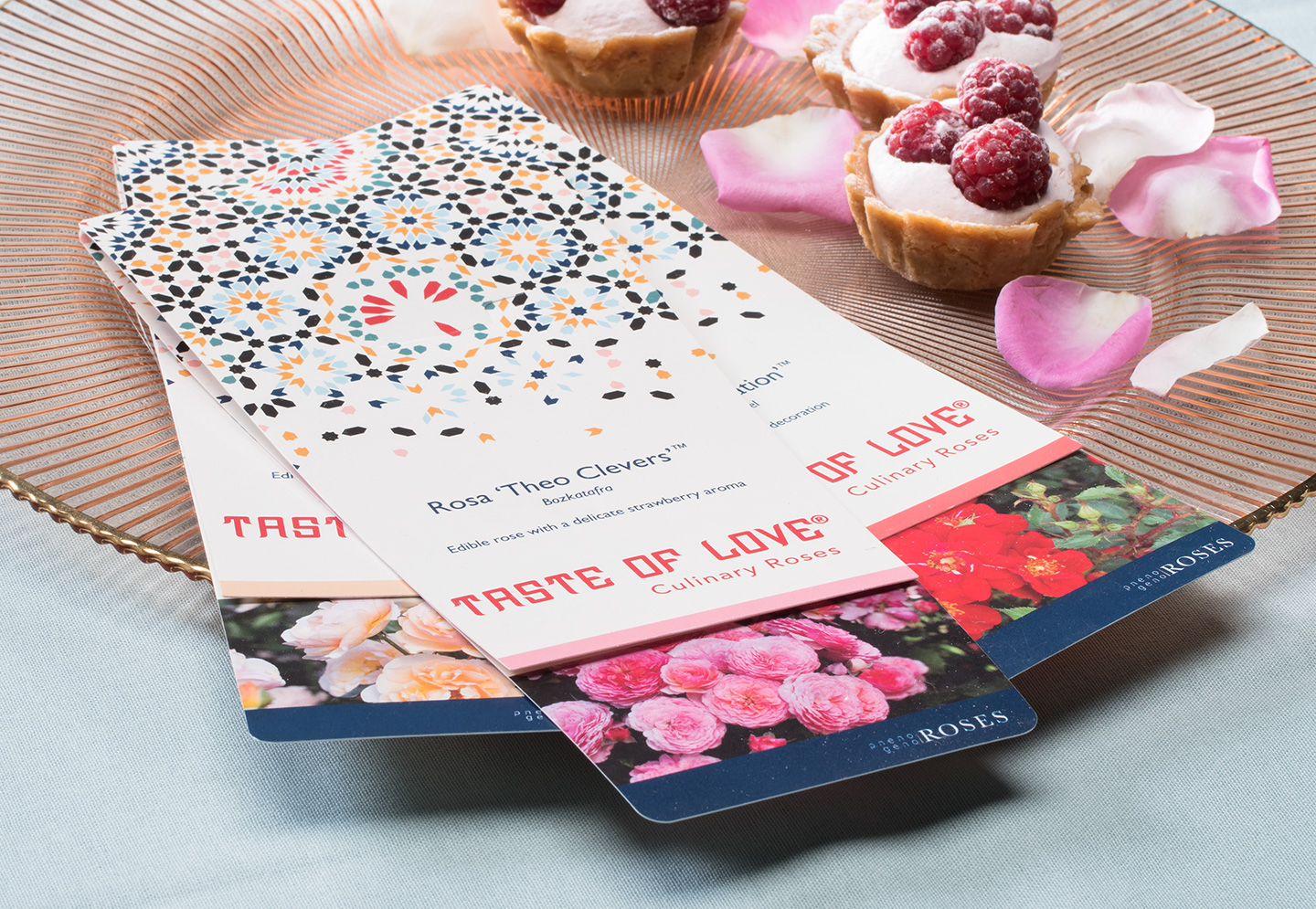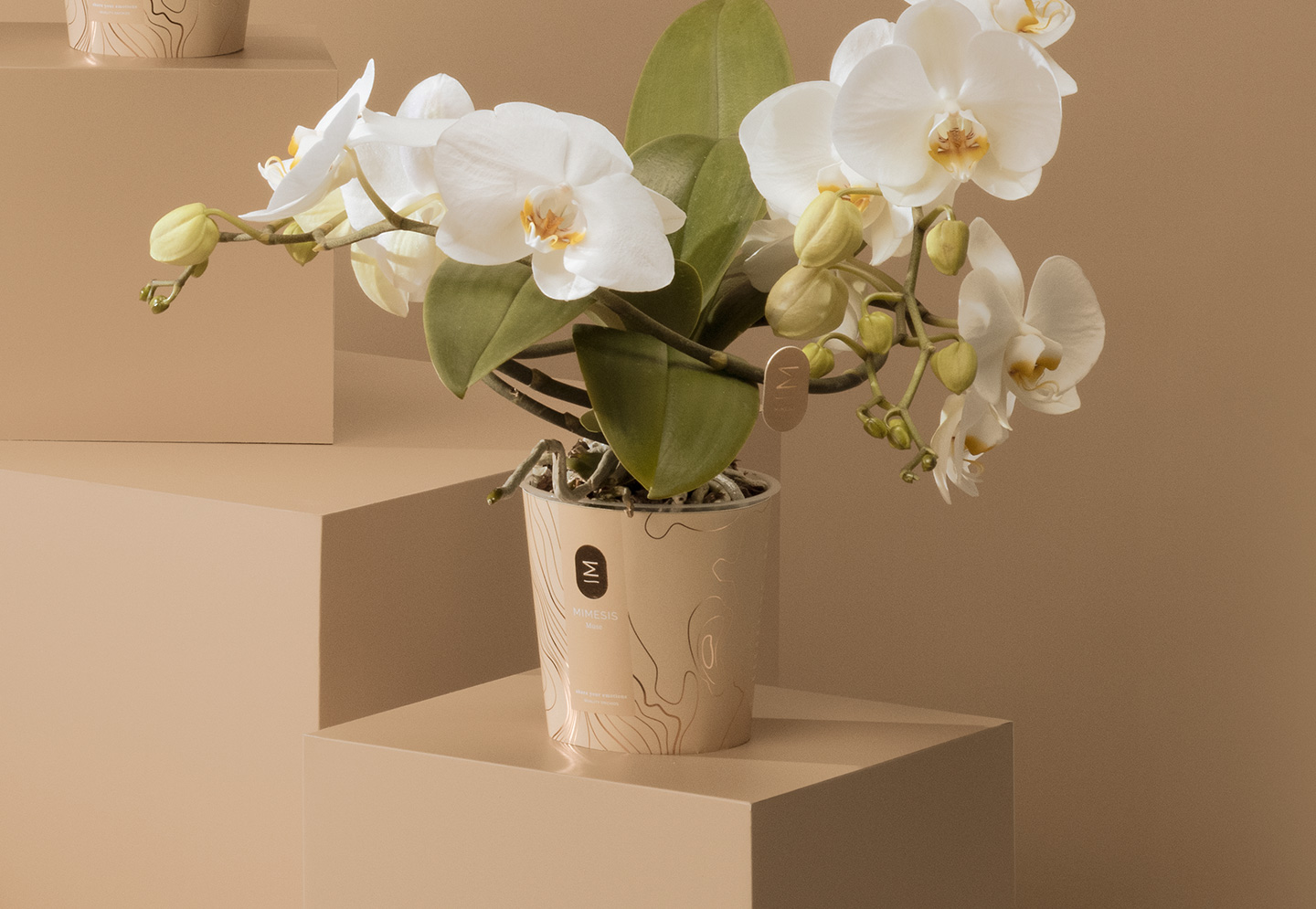Alternative Materials for Plant Labels
We stock a range of alternative materials, but which is right for you? By providing clear and concise information we can help you achieve the best results - including for the environment.
Page contents:
- Overview
- Helping you choose
- Performance
- Glossary of terms
OVERVIEW - OUR SUSTAINABLE LABEL MATERIALS
B500: Cardboard with double-sided PLA coating against moisture
Good moisture and weather resistance
Good levels of stability
Good for longevity
Good to print high quality images on
They have a PLA coating, which is made from a plant-based renewable resource (sugarcane starch)
FlorAqua: Cuna cardboard with double-sided varnish against moisture
Cardboard based on cellulose, a renewable raw material
White on both sides
Optimal for full-colour printing
High moisture resistance
Material also available without varnish (Cuna)
RPS100: 100% recycled polystyrene (plastic)
Great recyclability in the European market
100% recycled polystyrene
Very stable
High strength and rigidity
Optimal for full-colour printing
100% moisture resistant
Recyclable within specialist recycling centres
RPP MIX: Contains recycled polypropylene
Mix of new and at least 30% recycled polypropylene
High flexibility and stability
Tough and durable in external conditions
Good to print high quality images on
Optimal for full-colour printing
100% moisture resistant
Recyclable in the UK
HELPING YOU CHOOSE SUSTAINABLE PLANT LABELS
The sustainable material with the lowest CO2 footprint doesn’t necessarily have the lowest overall environmental impact. To help determine this, renewability, degradability and recyclability should also be taken into account.
It’s also important to consider functionality. Plants likely to be on the shop floor for a while need a durable long-lasting label. Plants with a quick sales turnover could use a faster degrading material. Finally, the availability of a material also plays a role.
The Floramedia Sustainable Choice Aid
The table below helps you choose a sustainable plant label with the desired functional properties. It shows you at a glance how you can easily take the step towards sustainability. Because every step, no matter how small, contributes.
How does it work?
- Choose a label type: stick-in label, hanging label or click label. You can immediately see how suitable a label material is for this application.
- For each label material you can see how well it scores on renewability, recyclability, degradability and CO2 footprint. At CO2 footprint you fill in the value per label type from the footprint calculator, which we can calculate for you. The lower the better. Determine now which sustainable option you prefer.
- Finally, check the availability: is the sustainable label material sufficiently available for the quantities you want to order.
| FlorAqua | B500 | RPS100 | RPP100 | RPP MIX | ||||
| Step 1 : choose label | ●● | ●●● | ●●●●● | ●●●● | ●●●● | Stick-in label | Legend: | |
| ●●●●● | ●●●●● | ●●● | ●●●●● | ●●●●● | Hanging Label | ● | Insufficient | |
| ●●● | ●●● | ● | ●●●●● | ●●●●● | Click Label | ●● | Moderate | |
| Step 2 : determine the degree of sustainability | ●●●●● | ●●●●● | ● | ● | ● | Renewable | ●●● | Sufficient |
| ●●● | ●●● | ●● | ●●●● | ●●●● | Recyclable | ●●●● | Good | |
| ●●●●● | ●●●● | ● | ● | ● | Degradable | ●●●●● | Excellent | |
| C02 footprint | ||||||||
| Step 3: Availability | ●●●●● | ●●● | ●●●●● | ●● | ●●●● | Available | ||
| When using mobile, scroll right to see the full table |
Need advice for a well-considered sustainable choice?
Tip: Try the Twig
Twig is a registered and sustainable stick made of birch wood, to attach a label to. This combination with a paper label offers a renewable, recyclable and biodegradable alternative with a low carbon footprint.

PERFORMANCE TEST OF SUSTAINABLE MATERIALS FOR PLANT LABELS
We’ve tested our sustainable materials under the most extreme conditions of use to measure their performance.
Design of the performance test
Simulating growing conditions on a nursery as much as possible, labels were inserted directly into consistently moist soil for four weeks. The constant high humidity and presence of soil micro-organisms exerting extreme pressure on the materials. The most vulnerable area of a label is often the transition point between soil and air. This point is often where we see bending or tearing.
During the test, the labels were monitored for three properties:
- Moisture resistance: how much moisture does the durable material absorb? It is desirable that the plant tag absorbs as little moisture as possible, as this weakens the material.
- Deformation: how much does the durable material deform under the influence of moisture and heat? When the fibres in the material absorb moisture, they expand in width. As a result, the material changes shape and looks less attractive.
- Stiffness: How stiff will the durable material remain when it is inserted into the ground? The stiffer the plant tag, the easier it is to insert into the soil.
| Start | 1 week | 2 weeks | 3 weeks | 4 weeks | Conclusion | |||
| Moisture resistance | Legend | |||||||
| RPS 100 | ●●●●● | ●●●●● | ●●●●● | ●●●●● | ●●●●● | Excellent | ● | Insufficient |
| RPPMIX | ●●●●● | ●●●●● | ●●●●● | ●●●●● | ●●●●● | Excellent | ●● | Moderate |
| B500 | ●●●●● | ●●●●● | ●●● | ●●● | ●●● | Good | ●●● | Sufficient |
| FlorAqua | ●●●●● | ●●●● | ●●● | ●● | ●● | Enough | ●●●● | Good |
| Deformation | ●●●●● | Excellent | ||||||
| RPS 100 | ●●●●● | ●●●●● | ●●●●● | ●●●●● | ●●●●● | Excellent | ||
| RPPMIX | ●●●●● | ●●●●● | ●●●●● | ●●●●● | ●●●●● | Excellent | ||
| B500 | ●●●●● | ●●●●● | ●●●● | ●●●● | ●●●● | Good | ||
| FlorAqua | ●●●●● | ●●●● | ●●●● | ●●● | ●●● | Enough | ||
| Stiffness | ||||||||
| RPS 100 | ●●●●● | ●●●●● | ●●●●● | ●●●●● | ●●●●● | Excellent | ||
| RPPMIX | ●●●●● | ●●●●● | ●●●●● | ●●●●● | ●●●●● | Excellent | ||
| B500 | ●●●● | ●●●● | ●●● | ●●● | ●● | Moderate | ||
| FlorAqua | ●●●● | ●●●● | ●●● | ●●● | ●● | Moderate | ||
| When using mobile, scroll right to see the full table | ||||||||
Hanging labels and stick-in labels
The above table details performance when used as stick-in labels. Results are likely to differ for hanging or click labels. These types of labels may be less exposed to moisture but need greater strength around a fastening point. Use our handy aid to help you decide.
GLOSSARY OF SUSTAINABILITY TERMS
100% recycled RPS/RPP
Manufactured entirely from recycled polystyrene (RPS) or recycled polypropylene (RPP). Used plastic is collected, shredded, cleaned and processed into new granules. This process uses less energy than making new plastic from raw materials. As a result, recycled plastic has a lower CO2 footprint than virgin plastic.
Degradability
The extent to which a material degrades over time under natural conditions. For example, because the material composts under the influence of oxygen, or because bio-organisms such as bacteria and fungi convert it into water, carbon dioxide and biomass.
Bio-based materials
Materials made from natural raw materials such as cellulose and sugar, which are extracted from, for example, wood, maize, beet, sugar cane and potato. Plastic can also come from natural raw materials. Renewable raw materials: raw materials that, in principle, will not run out, in contrast to fossil raw materials such as oil and gas. Biobased materials are renewable and always grow back. That can be within a few weeks (grass), or within a lifetime (trees).
Carbon footprint
The amount of emissions of the greenhouse gas CO2 (carbon dioxide) caused by producing and shipping a plant tag or other product.
Recyclability
The extent to which you can process a material back into raw material to make a new product. For example, glass can be melted down into new glass without loss of quality. Even if there is a loss of quality, you can often reuse the material. This is called downcycling. Think of the waste plastic labels that are used to make plant pots.
Virgin plastic
Produced from new plastic granulate from fossil raw materials, which costs a relatively large amount of energy and therefore has higher CO2 emissions.








